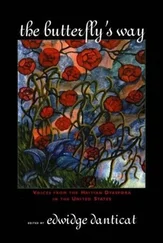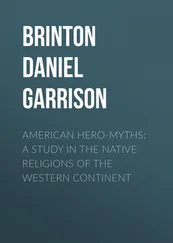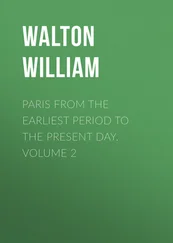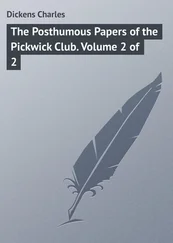Hubert Bancroft - The Native Races [of the Pacific states], Volume 1, Wild Tribes
Здесь есть возможность читать онлайн «Hubert Bancroft - The Native Races [of the Pacific states], Volume 1, Wild Tribes» — ознакомительный отрывок электронной книги совершенно бесплатно, а после прочтения отрывка купить полную версию. В некоторых случаях можно слушать аудио, скачать через торрент в формате fb2 и присутствует краткое содержание. ISBN: , Жанр: foreign_antique, foreign_prose, на английском языке. Описание произведения, (предисловие) а так же отзывы посетителей доступны на портале библиотеки ЛибКат.
- Название:The Native Races [of the Pacific states], Volume 1, Wild Tribes
- Автор:
- Жанр:
- Год:неизвестен
- ISBN:http://www.gutenberg.org/ebooks/41070
- Рейтинг книги:5 / 5. Голосов: 1
-
Избранное:Добавить в избранное
- Отзывы:
-
Ваша оценка:
- 100
- 1
- 2
- 3
- 4
- 5
The Native Races [of the Pacific states], Volume 1, Wild Tribes: краткое содержание, описание и аннотация
Предлагаем к чтению аннотацию, описание, краткое содержание или предисловие (зависит от того, что написал сам автор книги «The Native Races [of the Pacific states], Volume 1, Wild Tribes»). Если вы не нашли необходимую информацию о книге — напишите в комментариях, мы постараемся отыскать её.
The Native Races [of the Pacific states], Volume 1, Wild Tribes — читать онлайн ознакомительный отрывок
Ниже представлен текст книги, разбитый по страницам. Система сохранения места последней прочитанной страницы, позволяет с удобством читать онлайн бесплатно книгу «The Native Races [of the Pacific states], Volume 1, Wild Tribes», без необходимости каждый раз заново искать на чём Вы остановились. Поставьте закладку, и сможете в любой момент перейти на страницу, на которой закончили чтение.
Интервал:
Закладка:
388
The Ootlashoot women wear 'a long shirt of skin, reaching down to the ancles, and tied round the waist.' Few ornaments. The Nez Percés wear 'the buffalo or elk-skin robe decorated with beads, sea-shells, chiefly mother-of-pearl, attached to an otter-skin collar and hung in the hair.' Leggins and moccasins are painted; a plait of twisted grass is worn round the neck. The women wear their long robe without a girdle, but to it 'are tied little pieces of brass and shells, and other small articles.' 'The dress of the female is indeed more modest, and more studiously so than any we have observed, though the other sex is careless of the indelicacy of exposure.' 'The Sokulk females have no other covering but a truss or piece of leather tied round the hips and then drawn tight between the legs.' Three fourths of the Pisquitpaws 'have scarcely any robes at all.' The Chilluckittequaws use skins of wolves, deer, elk, and wild cats. 'Round their neck is put a strip of some skin with the tail of the animal hanging down over the breast.' Lewis and Clarke's Trav. , pp. 321, 340-1, 351, 359, 361, 377, 526, 528, 532-3. Many of the Walla Walla, Nez Percé, and Cayuse females wore robes 'richly garnished with beads, higuas,' etc. The war chief wears as a head-dress the whole skin of a wolf's head, with the ears standing erect. The Okanagans wear in winter long detachable sleeves or mittens of wolf or fox skin, also wolf or bear skin caps when hunting. Men and women dress nearly alike, and are profuse in the use of ornaments. Ross' Adven. , p. 127, 294-8; Id. , Fur Hunters , vol. i., p. 306. The Flatheads often change their clothing and clean it with pipe-clay. They have no regular head-dress. From the Yakima to the Okanagan the men go naked, and the women wear only a belt with a slip passing between the legs. Cox's Adven. , vol. i., pp. 133, 148, 240-1, vol. ii., p. 144. Nez Percés better clad than any others, Cayuses well clothed, Walla Wallas naked and half starved. Palmer's Jour. , pp. 54, 124, 127-8. At the Dalles, women 'go nearly naked, for they wear little else than what may be termed a breech-cloth, of buckskin, which is black and filthy with dirt.' Wilkes' Nar. , in U. S. Ex. Ex. , vol. iv., pp. 409-10, 426, 473. The Kliketat women wear a short pine-bark petticoat tied round the loins. Townsend's Nar. , pp. 78, 178, 148. 'Their buffaloe robes and other skins they chiefly procure on the Missouri, when they go over to hunt, as there are no buffaloe in this part of the country and very little other game.' Gass' Jour. , pp. 189, 205, 218-19, 295. Tusshepaw 'women wore caps of willow neatly worked and figured.' Irving's Astoria , pp. 315, 317, 319; Id. , Bonneville's Adven. , p. 301. The Flathead women wear straw hats, used also for drinking and cooking purposes. De Smet , Voy. , pp. 45-7, 198. The Shushwaps wear in wet weather capes of bark trimmed with fur, and reaching to the elbows. Moccasins are more common than on the coast, but they often ride barefoot. Mayne's B. C. , p. 301. Parker's Explor. Tour , pp. 229-30; Kane's Wand. , p. 264, and cut; Fremont's Ogn. and Cal. , pp. 186-7; Stevens , in Ind. Aff. Rept. , 1854, p. 222; Nicolay's Ogn. Ter. , p. 153; Franchère's Nar. , p. 268; Dunn's Oregon , p. 311; Coke's Rocky Mts. , p. 304; Hunt , in Nouvelles Annales des Voy. , tom. x., 1821, pp. 74-5, 78.
389
The Sokulk houses 'generally of a square or oblong form, varying in length from fifteen to sixty feet, and supported in the inside by poles or forks about six feet high.' The roof is nearly flat. The Echeloot and Chilluckittequaw houses were of the Chinook style, partially sunk in the ground. The Nez Percés live in houses built 'of straw and mats, in the form of the roof of a house.' One of these 'was one hundred and fifty-six feet long, and about fifteen wide, closed at the ends, and having a number of doors on each side.' Lewis and Clarke's Trav. , pp. 340, 351, 369-70, 381-2, 540. Nez Percé dwellings twenty to seventy feet long and from ten to fifteen feet wide; free from vermin. Flathead houses conical but spacious, made of buffalo and moose skins over long poles. Spokane lodges oblong or conical, covered with skins or mats. Cox's Adven. , vol. i., pp. 148, 192, 200. Nez Percé and Cayuse lodges 'composed of ten long poles, the lower ends of which are pointed and driven into the ground; the upper blunt and drawn together at the top by thongs' covered with skins. 'Universally used by the mountain Indians while travelling.' Umatillas live in 'shantys or wigwams of driftwood, covered with buffalo or deer skins.' Klicatats 'in miserable loose hovels.' Townsend's Nar. , pp. 104-5, 156, 174. Okanagan winter lodges are long and narrow, 'chiefly of mats and poles, covered over with grass and earth;' dug one or two feet below the surface; look like the roof of a common house set on the ground. Ross' Adven. , pp. 313-4. On the Yakima River 'a small canopy, hardly sufficient to shelter a sheep, was found to contain four generations of human beings.' Pickering's Races , in U. S. Ex. Ex. , vol. ix., pp. 34, 37. On the Clearwater 'there are not more than four lodges in a place or village, and these small camps or villages are eight or ten miles apart.' 'Summer lodges are made of willows and flags, and their winter lodges of split pine.' Gass' Jour. , pp. 212, 221, 223. 'At Kettle Falls, the lodges are of rush mats.' 'A flooring is made of sticks, raised three or four feet from the ground, leaving the space beneath it entirely open, and forming a cool, airy, and shady place, in which to hang their salmon.' Kane's Wand. , pp. 309, 272-3. The Pend d'Oreilles roll their tent-mats into cylindrical bundles for convenience in traveling. Stevens , in Ind. Aff. Rept. , 1854, pp. 215, 238, 282. Barnhart , in Id. , 1862, p. 271. The Shushwap den is warm but 'necessarily unwholesome, and redolent … of anything but roses.' Anderson , in Hist. Mag. , vol. vii., p. 77. Yakimas, 'rude huts covered with mats.' Gibbs , in Pac. R. R. Rept. , vol. i., p. 407. Shushwaps erect rude slants of bark or matting; have no tents or houses. Milton and Cheadle's N. W. Pass. , p. 242. From the swamps south of Flatbow Lake, 'the Kootanie Indians obtain the klusquis or thick reed, which is the only article that serves them in the construction of their lodges,' and is traded with other tribes. Sullivan , in Palliser's Explor. , p. 15. In winter the Salish cover their mats with earth. Hale's Ethnog. , in U. S. Ex. Ex. , vol. vi., p. 207. Flag huts of the Walla Wallas. Farnham's Trav. , p. 85; Mullan's Rept. , pp. 49-50; Palmer's Jour. , p. 61; Coke's Rocky Mts. , p. 295; Irving's Astoria , pp. 315, 319; Id. , Bonneville's Adven. , p. 301; De Smet , Voy. , p. 185; Id. , West. Missions , p. 284; Lord's Nat. , vol. ii., pp. 105-6. Hunt , in Nouvelles Annales des Voy. , tom. x., 1821, pp. 74-5, 79.
390
Natives begin to assemble at Kettle Falls about three weeks before the salmon begin to run; feuds are laid by; horse-racing, gambling, love-making, etc., occupy the assembly; and the medicine-men are busy working charms for a successful season. The fish are cut open, dried on poles over a small fire, and packed in bales. On the Fraser each family or village fishes for itself; near the mouth large gaff-hooks are used, higher up a net managed between two canoes. All the principal Indian fishing-stations on the Fraser are below Fort Hope. For sturgeon a spear seventy to eighty feet long is used. Cut of sturgeon-fishing. Lord's Nat. , vol. i., pp. 71-6, 181, 184-6. The Pend d'Oreilles 'annually construct a fence which reaches across the stream, and guides the fish into a weir or rack,' on Clarke River, just above the lake. The Walla Walla 'fisheries at the Dalles and the falls, ten miles above, are the finest on the river.' The Yakima weirs constructed 'upon horizontal spars, and supported by tripods of strong poles erected at short distances apart; two of the logs fronting up stream, and one supporting them below;' some fifty or sixty yards long. The salmon of the Okanagan were 'of a small species, which had assumed a uniform red color.' 'The fishery at the Kettle Falls is one of the most important on the river, and the arrangements of the Indians in the shape of drying-scaffolds and store-houses are on a corresponding scale.' Ind. Aff. Rept. , 1854, pp. 214, 223, 231, 233; Gibbs , in Pac. R. R. Rept. , vol. i., pp. 407-8. The salmon chief at Kettle Falls distributes the fish among the people, every one, even the smallest child, getting an equal share. Kane's Wand. , pp. 311-14. On Des Chutes River 'they spear the fish with barbed iron points, fitted loosely by sockets to the ends of poles about eight feet long,' to which they are fastened by a thong about twelve feet long. Abbott , in Pac. R. R. Rept. , vol. vi., p. 90. On the upper Columbia an Indian 'cut off a bit of his leathern shirt, about the size of a small bean; then pulling out two or three hairs from his horse's tail for a line, tied the bit of leather to one end of it, in place of a hook or fly.' Ross' Adven. , pp. 132-3. At the mouth of Flatbow River 'a dike of round stones, which runs up obliquely against the main stream, on the west side, for more than one hundred yards in length, resembling the foundation of a wall.' Similar range on the east side, supposed to be for taking fish at low water. Ross' Fur Hunters , vol. ii., pp. 165-6. West of the Rocky Mountains they fish 'with great success by means of a kind of large basket suspended from a long cord.' Domenech's Deserts , vol. ii., pp. 240-1. On Powder River they use the hook as a gaff. Coke's Rocky Mts. , p. 283. A Wasco spears three or four salmon of twenty to thirty pounds each in ten minutes. Remy and Brenchley's Jour. , vol. ii., p. 506. No salmon are taken above the upper falls of the Columbia. Thornton's Ogn. and Cal. , vol. i., p. 392. Walla Walla fish-weirs 'formed of two curtains of small willow switches matted together with withes of the same plant, and extending across the river in two parallel lines, six feet asunder. These are supported by several parcels of poles, … and are either rolled up or let down at pleasure for a few feet… A seine of fifteen or eighteen feet in length is then dragged down the river by two persons, and the bottom drawn up against the curtain of willows.' Lewis and Clarke's Trav. , p. 532. Make fishing-nets of flax. Parker's Explor. Tour , p. 90. 'The Inland, as well as the Coast, tribes, live to a great extent upon salmon.' Mayne's B. C. , p. 242; Nicolay's Ogn. Ter. , pp. 152-3. Palouse 'live solely by fishing.' Mullan's Rept. , p. 49. Salmon cannot ascend to Coeur d'Alêne Lake. Hale's Ethnog. , in U. S. Ex. Ex. , vol. vi., pp. 209-10. Okanagan food 'consists principally of salmon and a small fish which they call carp.' Wilkes' Nar. , in U. S. Ex. Ex. , vol. iv., p. 462. The Walla Wallas 'may well be termed the fishermen of the Skyuse camp.' Farnham's Trav. , p. 82.
Читать дальшеИнтервал:
Закладка:
Похожие книги на «The Native Races [of the Pacific states], Volume 1, Wild Tribes»
Представляем Вашему вниманию похожие книги на «The Native Races [of the Pacific states], Volume 1, Wild Tribes» списком для выбора. Мы отобрали схожую по названию и смыслу литературу в надежде предоставить читателям больше вариантов отыскать новые, интересные, ещё непрочитанные произведения.
Обсуждение, отзывы о книге «The Native Races [of the Pacific states], Volume 1, Wild Tribes» и просто собственные мнения читателей. Оставьте ваши комментарии, напишите, что Вы думаете о произведении, его смысле или главных героях. Укажите что конкретно понравилось, а что нет, и почему Вы так считаете.
![Hubert Bancroft The Native Races [of the Pacific states], Volume 1, Wild Tribes обложка книги](/books/750126/hubert-bancroft-the-native-races-of-the-pacific-s-cover.webp)








![Hubert Bancroft - The Native Races [of the Pacific states], Volume 5, Primitive History](/books/749157/hubert-bancroft-the-native-races-of-the-pacific-s-thumb.webp)


